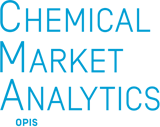- Market Overview
- Key Benefits
- Service Features
- Annual Table of Contents
Market Overview
Duration: Long-term outlook to 2050
Toluene is an aromatic compound produced mainly from catalytic reforming of naphtha and from steam cracking of paraffinic hydrocarbons. Toluene is also generated as a byproduct of styrene production and coke production. Toluene is utilized as a high-octane, low vapor pressure gasoline blend stock and as a solvent in various applications such as paints, coatings, sealants, elastomers, inks, dyes, cleaning agents, and adhesives. Toluene is also used to produce benzene and mixed xylenes in various transalkylation and disproportionation processes. Toluene di-isocyanate (TDI) and benzoic acid represent intermediate chemicals produced from toluene. TDI is used to produce polyurethane polymers which are used broadly for various applications including foam for mattresses, furniture and car seats; refrigerator insulation; elastomers for shoe soles and gel pads; and protective varnishes, coatings, and adhesives. Benzoic acid is an intermediate used to produce plasticizers, food preservatives, artificial flavors, insect repellent, phenol, and topical antiseptics.
Mixed xylenes are C8H10 aromatics comprised mostly of paraxylene, orthoxylene, metaxylene, and ethylbenzene. Mixed xylenes are produced commercially from catalytic reforming of naphtha, disproportionation and transalkylation of Toluene, and steam cracking of paraffinic hydrocarbons. Mixed xylenes are processed to isolation each of the primary xylene isomers for further use. The paraxylene isomer has by far the largest demand and is utilized primarily to produce polyester fiber and plastic bottles. Orthoxylene is isolated primarily to produce phthalic anhydride, a plasticizer in the manufacture of polyvinyl chloride products. Metaxylene is isolated and used to produce isophthalic acid, which, in turn, is used to manufacture polyethylene terephthalate (PET) soft-drink bottles. Mixed xylenes, much like toluene, are also used in solvent applications for paints, coatings, sealants, elastomers, inks, dyes, cleaning agents, and adhesives.
Key Benefits
Duration: Long-term outlook to 2050
The World Analysis – ABS Resins provides a comprehensive analysis and key insights into critical market developments as they shape the future outlook for the global ABS Resins market.
The following reports, data files, analytical tools and visualization modules are available online and can be downloaded from our website:
- Direct Access to the Subject Matter Experts
- In-depth exploration of present market strategic insights, recognition of critical challenges, and presentation of our experts’ forecasts and analysis
- Explanatory Notes detailing data sources, methodologies, unit and conversion factors, and World Analysis deliverables.
- Energy and Economy assumptions
- Price, cost, and margin base assumptions forecast and sensitivities analysis, including price assessment methodology and price definitions across all regions.
- Excel data files with standard supply/demand graphics and price forecasts extended to 2050, trade grids with country and regional trade flows Data appendix (Excel) with supply/demand, capacity and trade tables.
- An online dashboard visualization of capacity, supply/demand, trade grids, and price, cost and margin forecasts
- Supply/demand and capacity database access via data browser
- Data Appendix (Excel) with supply/demand and capacity tables
- Capacity by company/shareholder, capacity integration, top producer/consumer and surplus/deficit capacity ranking, and ownership/subsidiary information
In addition to the main product, Methanol, capacity and textual analysis are provided for the following products:
- Acetic Acid
- Biodiesel
- Chloromethanes
- Dimethyl ether
- Formaldehyde
- Gasoline Blending
- Methanol-to-olefins / Methanol-to-Propylene
- Methyl methacrylate
- Methyl tert-butyl ether
- Methylamine
- Methanol as a marine bunker fuel
This World Analysis contains detailed information on capacities, production, demand, and trade for all significant producing and consuming countries and regions. Although data gathering is essential for understanding history and potential future trends, we believe that the interpretation and analysis of the data is the most valuable information to our clients.
Service Features
Duration: Long-term outlook to 2050
SUPPLY/DEMAND BALANCES
Frequency: Bi-annual
Format: Excel
Timeframe: 10-year forecasts available from periods 1990 – 2050
Area Coverage: By country/region; include “hypothetical” capacity changes in the forecast period
Chemical Coverage: Benzene
CAPACITY DATABASE
Frequency: Updated daily
Format: Excel
Timeframe: 10-year forecasts available from periods 1990 – 2050
Coverage:
- Nameplate capacity on individual plant location by producer and by the shareholder for main study products + essential derivatives
- Integration table and top producer and consumer ranking tables (includes net surplus/deficit)
PRICE & COST FORECASTS
Frequency: Quarterly
Format: Excel
Timeframe: up to 2050
Area Coverage: For the key regions of North America (US), Europe & Asia
Chemical Coverage: Benzene
TRADE GRIDS
Frequency: Bi-annual
Format: Excel
Timeframe: 1 year of history, up to 10 years of forecast
Area Coverage: Between partner countries and by region
Chemical Coverage: Benzene
REPORT WITH STRATEGIC INSIGHTS AND EXECUTIVE OVERVIEW
Frequency: Annual
Format: PDF/HTML
Timeframe: 5-year history, forecast to 2050
Coverage: Regional market summaries
- Production economics/snapshots for selected regions/processes
- Production process/technology overview
ADDITIONAL FEATURES
- Access to our global team of subject matter experts
- Interactive data visualization module (dashboard)
- Standard supply/demand graphs
- Data appendix with supply/demand and capacity tables
- Supply/demand and capacity database access via data browser
Annual Table of Contents
- Introduction 5
- Executive Overview 6
- Strategic Insights 10
- Introduction 10
- Energy Transition 10
- On-purpose production 12
- Ethylene steam cracker feedstocks 12
- Paraxylene overcapacity and rationalization 12
- Crude-to-chemicals processes 13
- Coal to benzene 13
- Benzene trade 13
- Plastics sustainability 14
- North America 15
- South America 18
- West Europe 21
- Central Europe 25
- CIS & Baltic States 28
- Africa 32
- Middle East 35
- Indian Subcontinent 39
- Mainland China 42
- Other Northeast Asia 45
- Southeast Asia 48
- Production Process Overview 51
- Introduction 51
- Catalytic reforming 51
- Aromatics Extraction Process 53
- Hydrodealkylation 54
- Toluene Disproportionation 54
- Pyrolysis Gasoline Extraction 55
- Aromax Process 56
- Production Process Economics 58
- Explanatory Notes 58
- Benzene Economics - Hydrodealkylation 59
- Benzene Economics - Sulfolane Extraction of BTX 62
- Benzene Economics - Toluene Disproportionation 65
- Price Forecast 68
- Methodology 68
- North America 69
- West Europe 69
- Asia 70
- Price Forecast Tables 71
- Supply/Demand Forecast Methodology 73
Market Coverage
Adhesives
Fuel
Paint & Coating
Solvent
Related Products
Related Chemicals
Looking for Short Term Analysis ?
Your Success, Our Priority
In a world where markets evolve rapidly, having the right insights is the key differentiator. Partner with us for critical market insights that propel you beyond competition. Your success is not just a goal, it's our commitment.
Contact us today to revolutionize your approach to business strategy with Market Insights!


